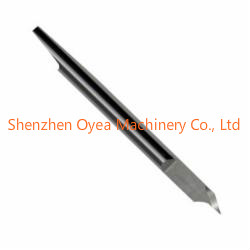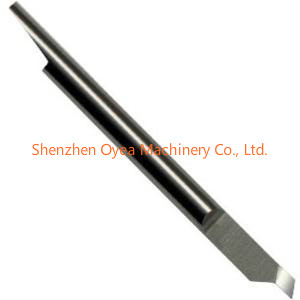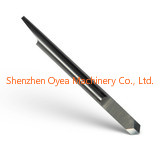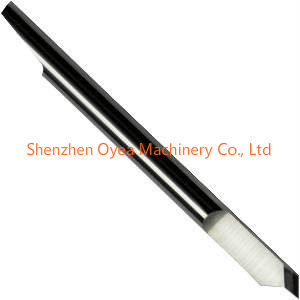
Overview of Each Blade
| Blade Model | Angle | Ideal For | Key Features |
|------------|--------|-----------------------------------------------|-------------------------------------------------------------|
| 390-534 | 36° | Standard vinyl, thin films | General-purpose blade for common cutting tasks |
| 390-550 | 45° | Thicker vinyl, reflective materials | Steeper angle for tougher materials |
| 390-551 | 60° | Sandblast stencil, thick media | Very steep angle for hard/thick materials |
| 390-560 | 36° | Textiles, window tint | Specialized for softer or delicate materials |
How to Choose the Right Blade
1. Material Type:
-Standard Vinyl, Fluorescents → Use 390-534 (36°)
-Reflective or Metallic Film → Use 390-550(45°)
-Sandblast Stencil, Cardboard, Rubber → Use 390-551 (60°)
-Textiles, Tint Film, Delicate Media → Use 390-560 (36° but optimized for soft)
2. Material Thickness:
- < 0.25 mm (0.01") → 36° blade
- 0.25 mm – 0.5 mm (0.01–0.02") → 45° blade
- > 0.5 mm (0.02")** or rigid → 60° blade
3. Cutting Detail Required:
- More intricate cuts = shallower angle (36°)
- Stronger cuts (less detail) = steeper angle (45° or 60°)
Usage Tips
- Blade Depth: Set the blade so it just barely scores the backing paper. Too deep = fast wear & poor cuts.
- Cutting Strip: Keep it clean and undamaged—this affects cut quality!
- Blade Holder Maintenance: Clean regularly and ensure bearings move smoothly.
- Speed & Force Settings:
- Start with manufacturer’s recommended settings.
- Do a test cut first.
- Adjust force if corners lift or lines aren’t clean.
Maintenance Tips
- Clean the blade tip regularly (especially after cutting adhesives).
- Rotate or replace the cutting strip if you notice inconsistent cut depths.
- Store unused blades in a dry, dust-free place to avoid corrosion.
Would you like a quick cheat sheet for material/blade matching or help choosing based on a specific project you're working on?
PREV : What are the main differences between Summa T series 390-534, 390-550, 390-551, and 390-560 blade NEXT : How To Choose The Filiz Rotation Knife Blade And Usage Tips









